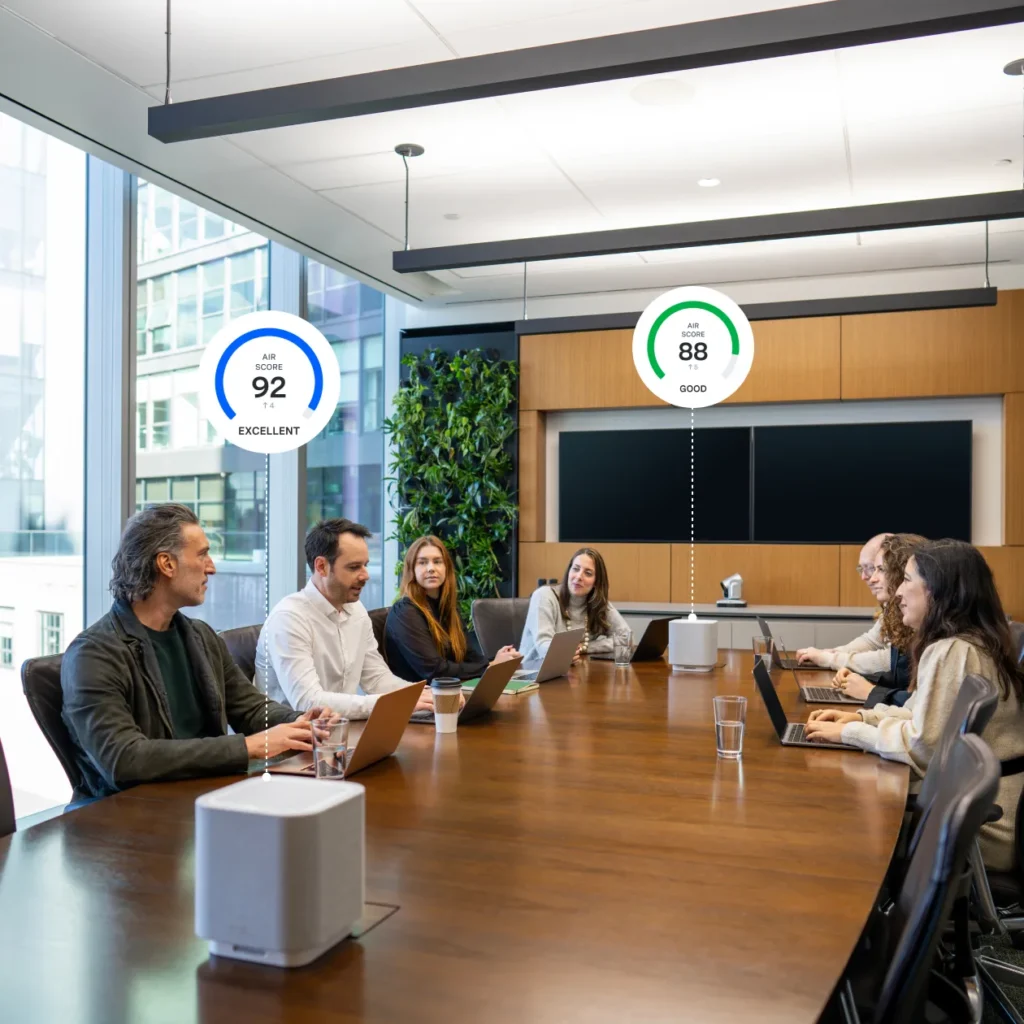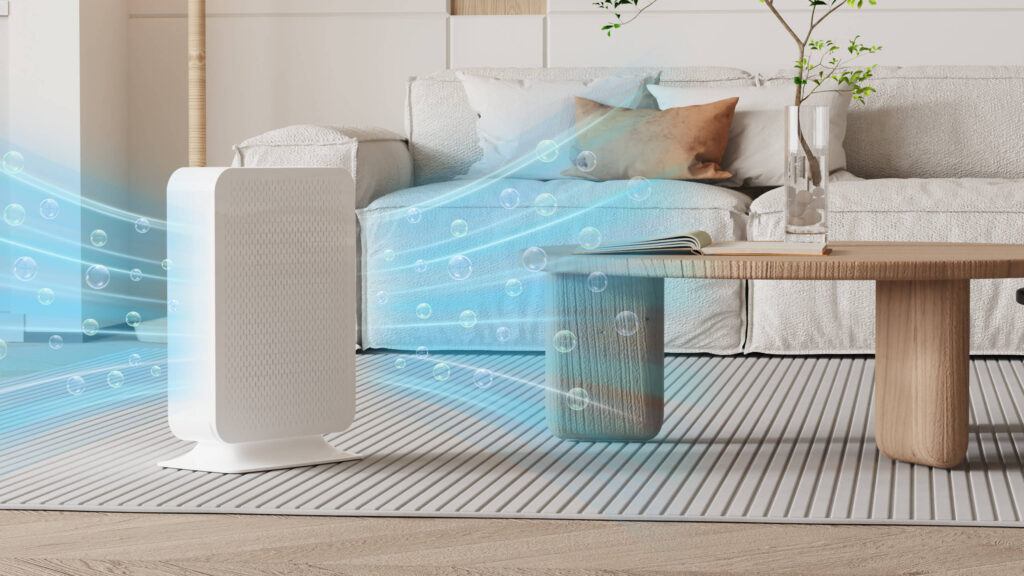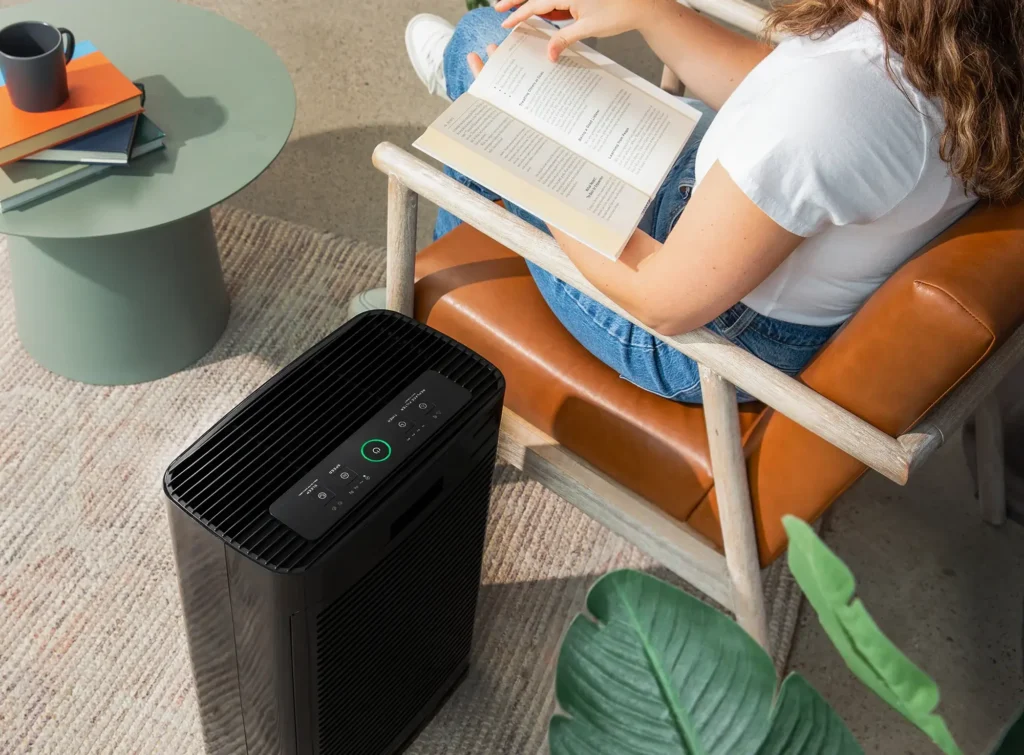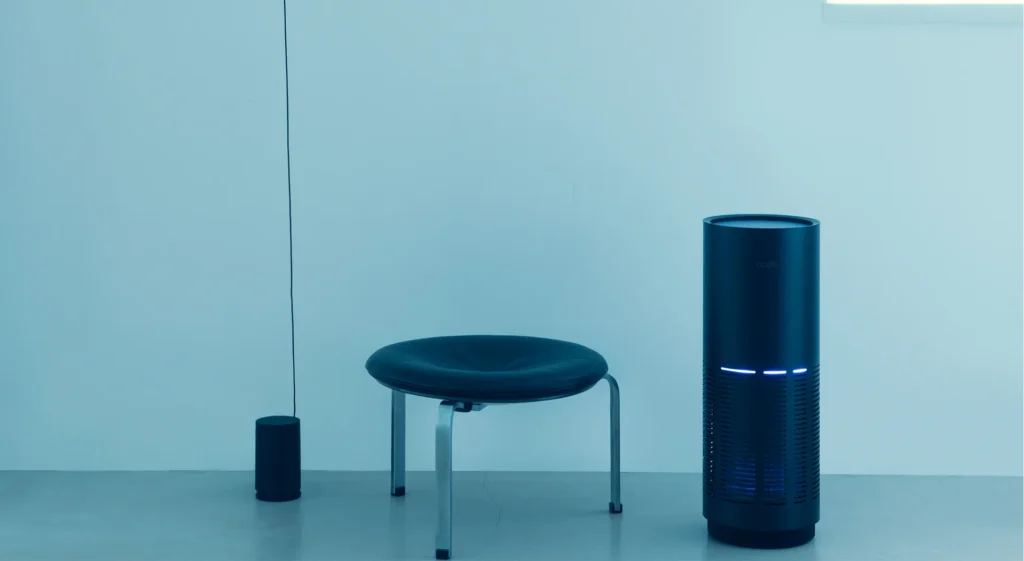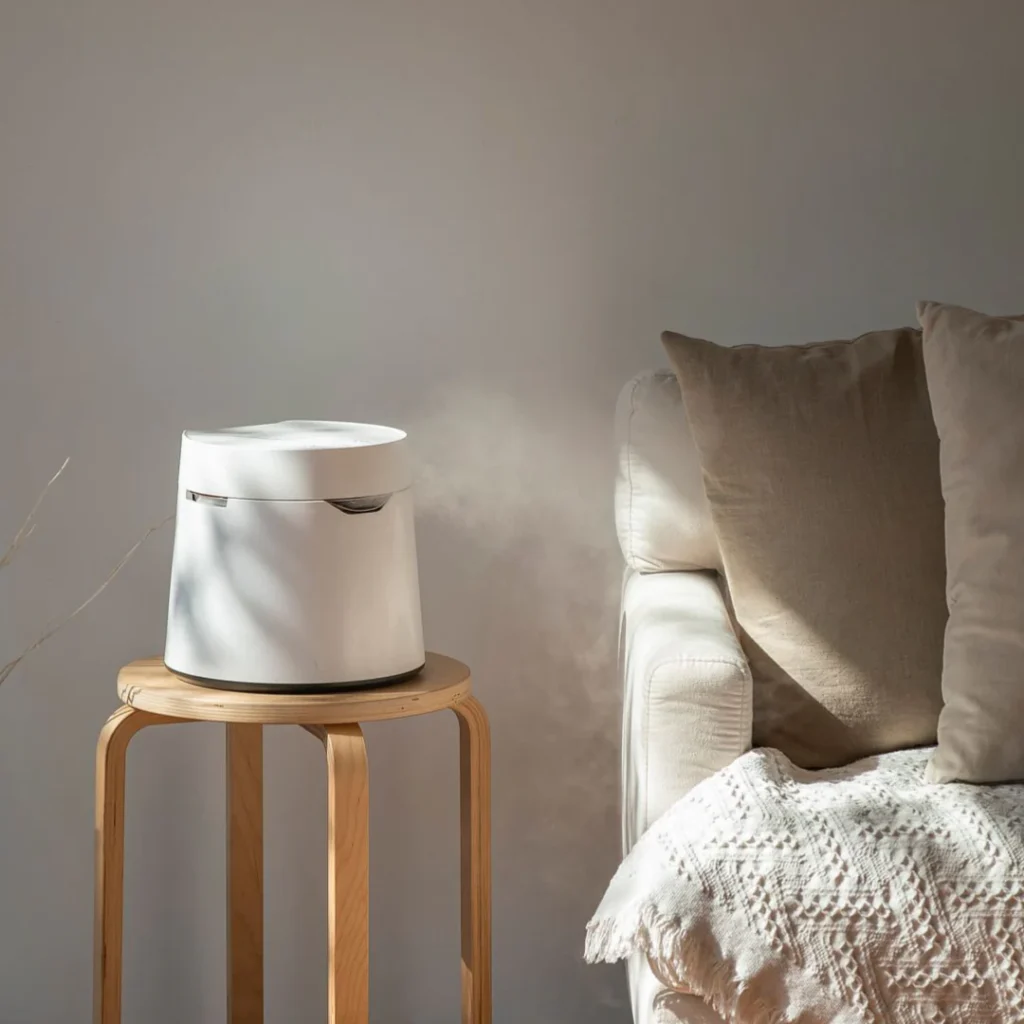すでに素晴らしい空気清浄機の性能を、まだ最適化できることをご存知ですか?その方法については、こちらをお読みください!
空気清浄機は、空気中のさまざまな汚染物質を捕獲するように設計されている。アレルゲン、ホコリ、チリ、浮遊物などは、空気清浄機が扱うもののひとつだ。
以下のような高品質の空気清浄機がある。 ヒソエア社製しかし、それだけではない。病気を引き起こす病原体、揮発性有機化合物、その他の有害なガス状化合物を浄化することもできるのだ。
空気清浄機の仕組みはいたってシンプルだ。しかし、これらの装置の性能を最適化し、適切に活用するためには、その仕組みを理解することが不可欠だ。
空気清浄機は何に役立つのか?
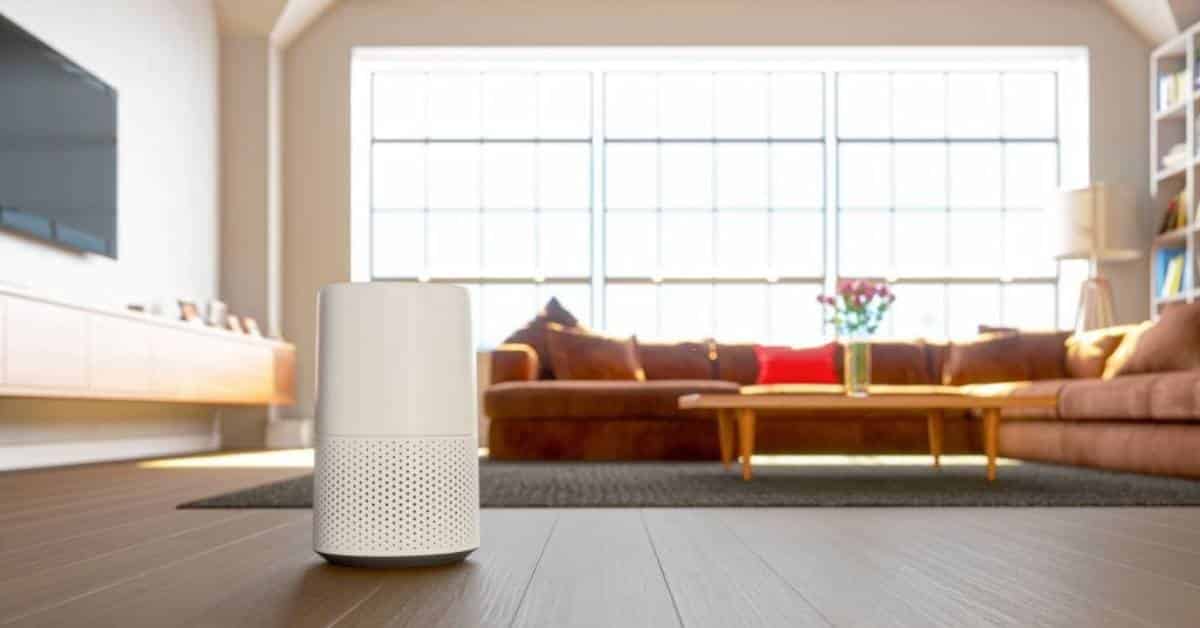
画像出典:iStockphoto
空気清浄機の使い方を詳しく説明する前に、空気清浄機が何のためにあるのかを理解しておくことが重要だ。
専門的に言えば、これらの空気清浄機の目的は、空気中の多くの汚染物質を捕獲することである。一般に信じられているのとは逆に、これらの空気清浄機は空気中の粒子を殺したり中和したりはしない。もちろん、病原体(バクテリアやウイルスなど)については例外であり、空気清浄機は、空気中に浮遊する微粒子を殺したり中和したりはしない。 紫外線 .
一般的に言って、フィルター式空気清浄機は室内の空気の質を改善するのに役立つ。一般的に住宅で使用されている。しかし、商業用や工業用の空気清浄機もある。
空気清浄機のフィルターは、呼吸する空気を汚染するさまざまな種類の物質や粒子を捕捉する。これらの汚染物質には、ゴミ、ホコリ、アレルゲンなどが含まれる。 季節性アレルギー (つまり花粉)。
これまで述べてきたように、空気清浄機の中には、ガス状の化学物質や肺系を刺激する物質を効率よく除去するものもある。多くの場合、空気清浄機は刺激臭の除去にも使われる。空気清浄機は掃除機にも匹敵するので、ゴミやペットの毛を取り除くこともできる。
空気清浄機は家庭に何をもたらすか?
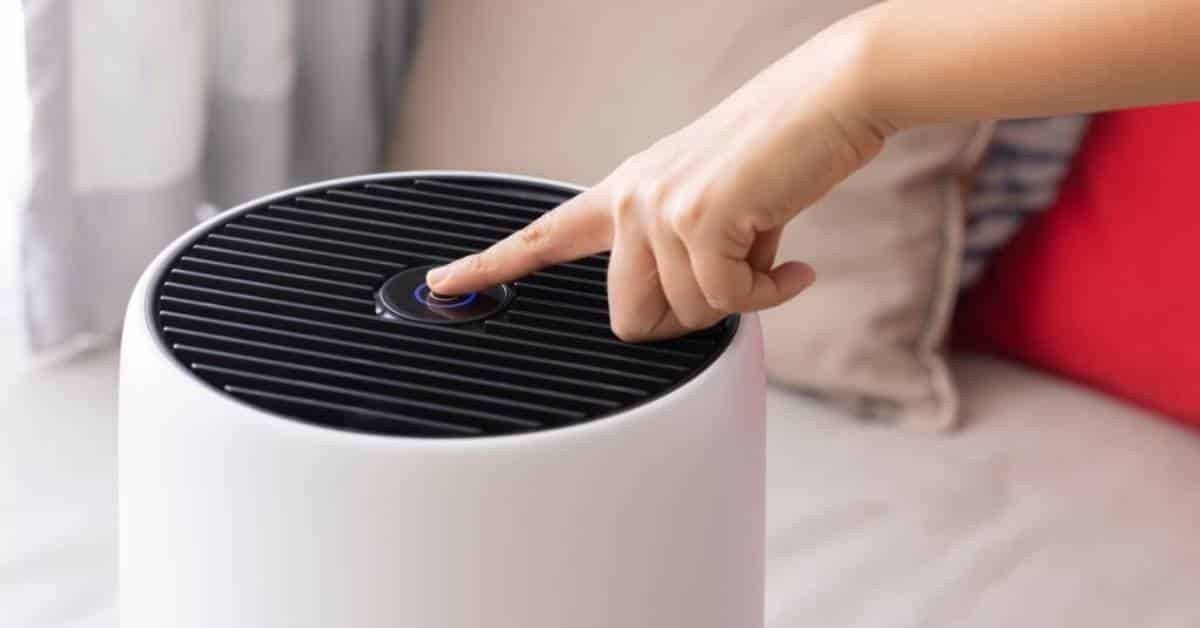
画像出典:iStockphoto
最近では、空気清浄機は住宅用として一般的に使用されている。その COVID-19の登場 そしてその余波は、清潔で安全な空気を吸うことが不可欠であることを人々に認識させた。
空気清浄機は、室内空間を汚染物質やその他の空気中の脅威から守るために設計されています。ご存じないかもしれませんが、あなたの家は屋外と屋内の両方の大気汚染物質の影響を受けやすいのです。家の中には、影響を受けやすい化粧品、塗料、掃除用品、その他の家庭用品から出る化学物質や残留物があります。屋外には、生活空間に侵入しやすい汚れ、燃焼、ウイルスがあります。
掃除機、拭き掃除、ブラッシングなど、通常の掃除方法では、これらの汚染物質を取り除くことはできない。空気清浄機について決めかねている人は、このことを常に考慮に入れる必要がある。空気清浄機は、他の機器では除去できない空気中の汚染物質を除去することができる。
空気清浄機は、室内の空気の質に不安を感じているなら、大きな投資となる。あなたやあなたの家族がアレルギーや呼吸器系の病気にかかりやすいなら、これらの機器は取り入れる価値がある。
空気清浄機はいつ使うべきか?
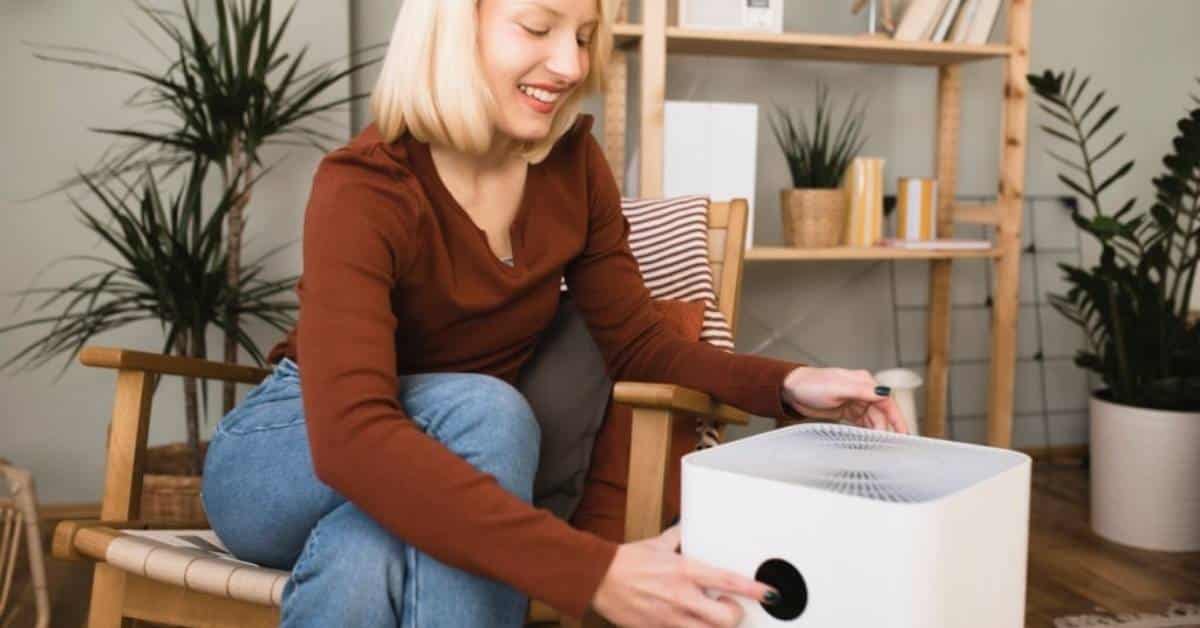
画像出典:iStockphoto
常にね。これがこの質問に対する簡単な答えだ。
しかし、もう少し詳しく説明しよう。空気清浄機は連続的に作動するように設計されている。したがって、ノンストップで稼働させ続けても問題はないはずだ。
- 室内空気が汚染されやすい住宅では、空気清浄機を定期的に使用することが推奨される。例えば 都市設定 そのため、屋外の汚染物質が家に入ってくる可能性が高い。郊外の住宅でさえ、すでにそのような問題に悩まされている。
- 敷地内で工事や改築プロジェクトがある場合は、空気清浄機を使うべきです。建物のホコリやペンキ、ゴミなども空気を汚染します。空気清浄機を稼働させれば、これらの残留物を抑制し、穏やかに保つことができる。
- 赤ちゃんがいる家では、寝室に空気清浄機を置くのがベストだろう。こうすることで、喘息やその他のアレルギーの引き金となる有害な汚染物質を吸い込むことがなくなる。空気清浄機を常に作動させておけば、赤ちゃんはいつでも安全でいられる。
- 家を空ける場合、特に電気代を気にするのであれば、空気清浄機を使わないことを選ぶかもしれない。しかし、ほとんどの空気清浄機は 省エネ しかし、室内の空気を清潔に保つために、これらの空気清浄機を使用する必要がある。
- 空気清浄機にはタイマー機能がある。就寝中はこの機能を使い、ファンの回転数を最低に設定することができる。こうすることで、不要な音に邪魔されることなく、きれいな空気を吸うことができる。
空気清浄機の使用頻度は?
上記の議論と同様に、空気清浄機を使用する頻度も、室内空間の現在のニーズによって異なるかもしれない。定期的に使用できれば、本当に素晴らしいことだ。そうすれば、この質問で悩む必要はなくなる。
しかし、空気清浄機を連続使用したくない場合はどうすればいいのだろうか?どのくらいの頻度で使えばいいのだろうか?
- その答えは、あなたの需要にあるかもしれない。アレルギーの季節には、空気清浄機は常に稼働していなければならない。花粉やその他のアレルゲンが喘息やアレルギーの引き金にならないように。
- 通常の季節--明らかに脅威がないとき--は、空気清浄機を1日2回使用することができる。朝と夕方です。この時間帯は通常、人がいる時間帯です。居住空間に人がいる限り、空気清浄機は常に稼働させておくべきです。
- 家の中に人がいなければ、空気清浄機を閉め切ることもできる。特に、屋外の汚染物質が入り込むような隙間や継ぎ目が家にない場合は、そうすることができる。しかし、寝室のダニや地下室のカビの問題など、特定の脅威がある場合は、その場所に空気清浄機を設置する必要があります。全館空気清浄機があれば、なお良い。
要するに、空気清浄機は必要なときに使うべきだということだ。汚染物質が家に入りやすいなら、空気清浄機を頻繁に使うべきだ。
空気清浄機はどちらを向くべきか?
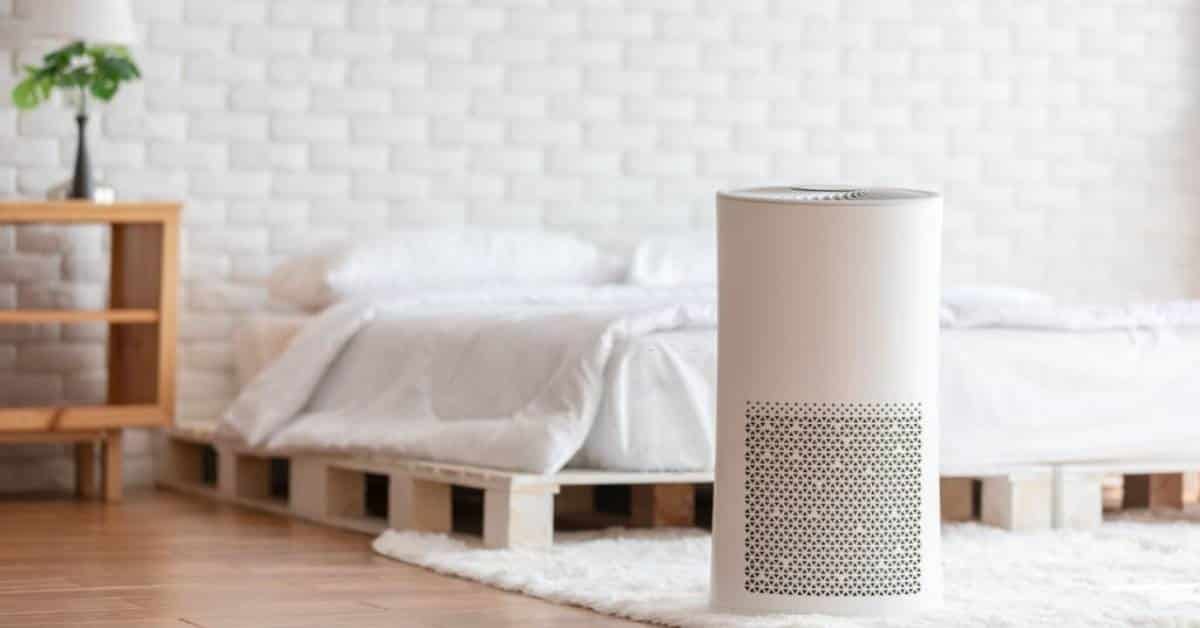
画像出典:iStockphoto
空気清浄機は、物理的な障害物がない方向を向いていなければならない。空気中に浮遊する汚染物質が見えないと仮定すると、私たちにできる最善のことは、空気清浄機に障害物がないことを確認することです。
空気清浄機は、吸気口が家具などでふさがれない場所に設置する。少なくとも、空気清浄機の四方に3~4フィートのスペースを確保する必要があります。こうすることで、空気を適切に吸収・分配することができる。
空気清浄機を壁に直接当てないでください。空気の流れが制限され、汚染物質を効率的に捕らえることができなくなります。
空気清浄機に複数の吸気口があれば、この問題を心配する必要はない。つまり、空気を多方向に吸収・分散させることができるのだ。
汚染源が特定できれば、その方向に空気清浄機を向ける。そうすることで、空気中の汚染物質の拡散や増殖を抑えることができるはずだ。
空気清浄機の効果的な使い方とは?(よくある質問一覧)
空気清浄機には、その性能に応じてさまざまな操作方法がある。 メーカー.このブログでは、空気清浄機を最大限に活用するための使い方に焦点を当てます。
この6つのヒントは、電気代を節約し、電気器具の寿命を延ばし、空気清浄能力を最大限に発揮させるのに役立つに違いない。
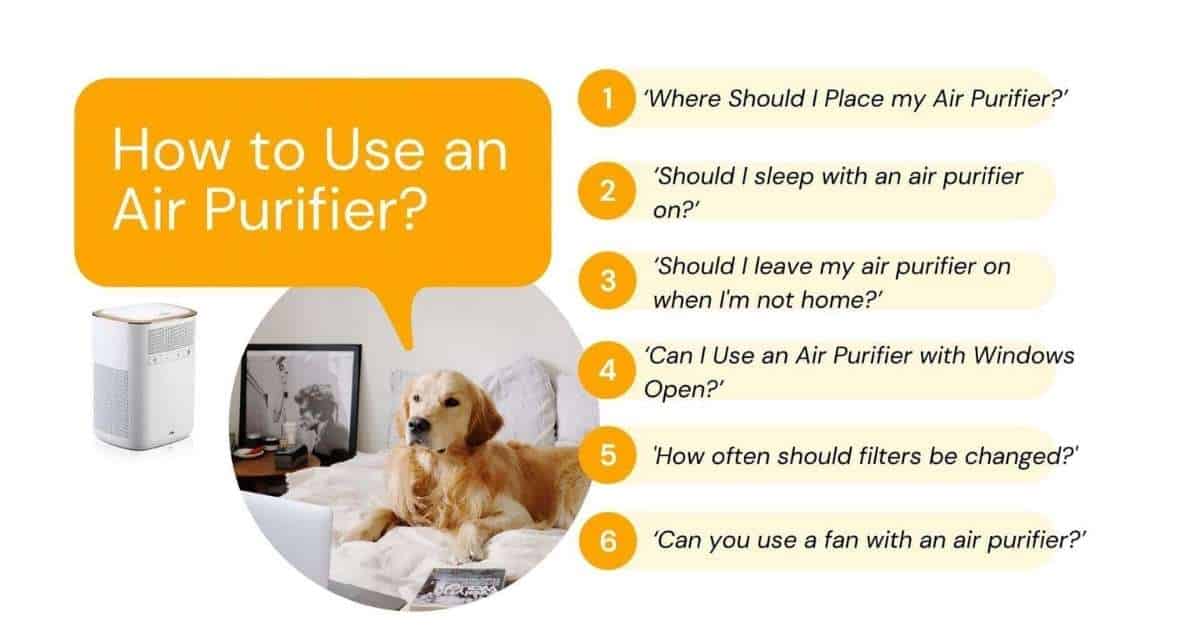
HEPA空気清浄機は、空気中の汚染物質を99.7%除去します。 ばい菌 を家庭内に循環させる。したがって、高性能の空気清浄機に投資することで、長期的・短期的な健康効果が期待できます。寝つきを良くし、肺を健康に保ち、悪臭を中和するだけでなく、空気感染症の予防にも役立ちます。
もちろん、空気清浄機から得られるこのようなプレミアムな利点があれば、この機械が長持ちすることも望むところだ。
ここでは、空気清浄機の使用方法とその対処法について、よくある質問を紹介する。
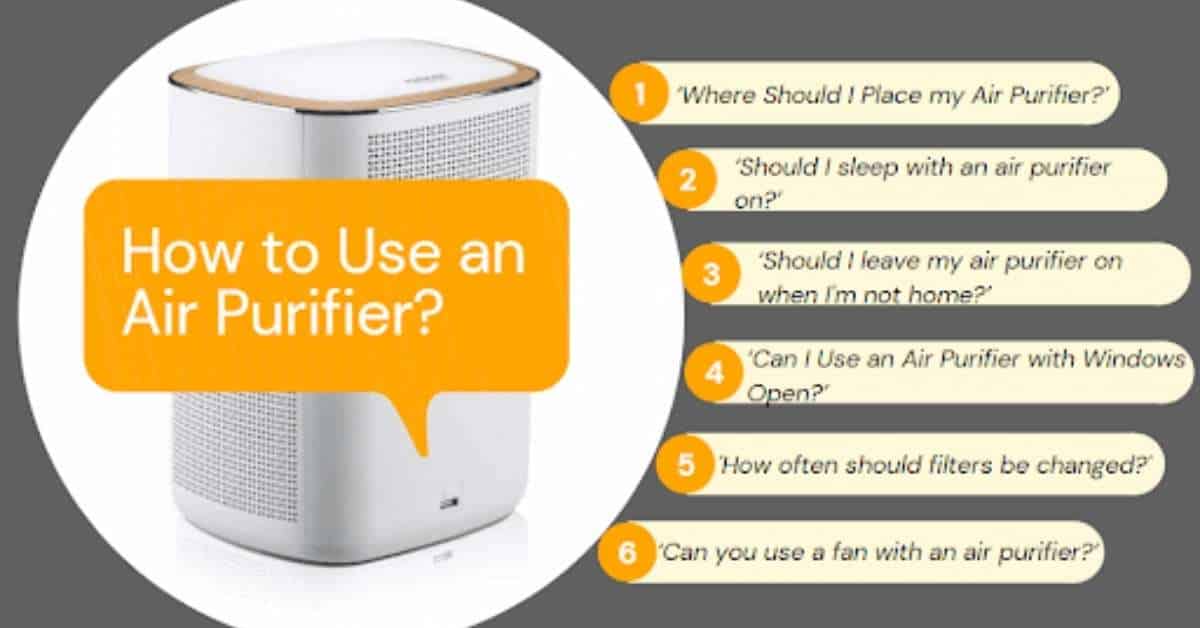
#1。Q:空気清浄機はどこに置くべきか? - 角から離れた汚染源に設置する。
買ったばかりの空気清浄機を、上面と4辺が壁や物に邪魔されない場所に置く。
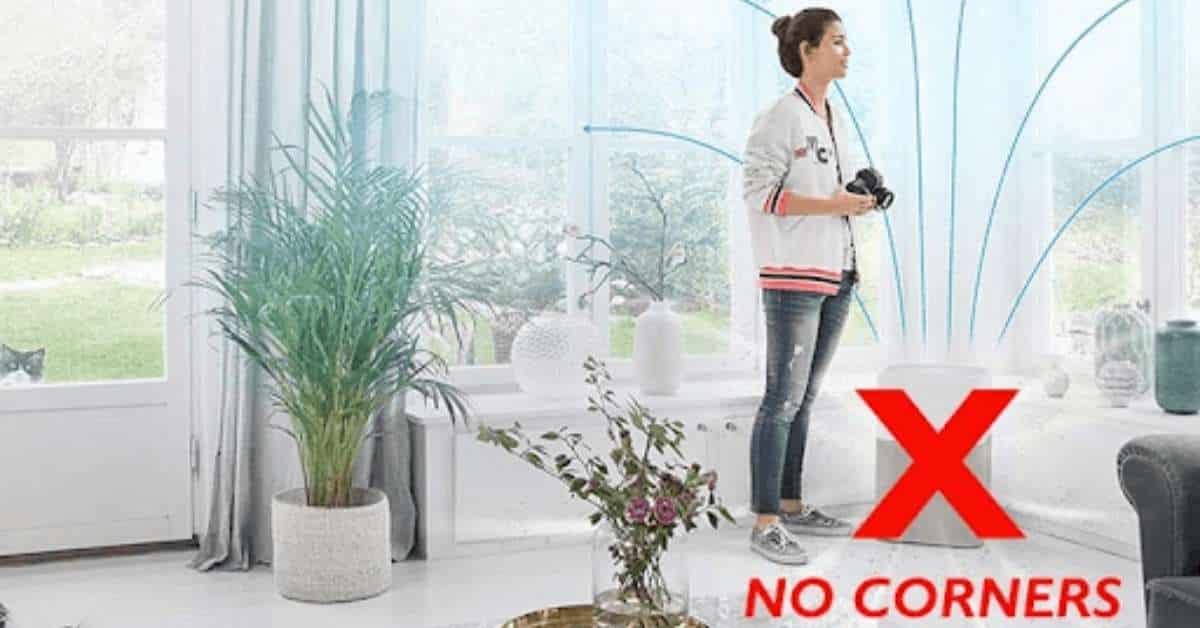
その理由は、多くの空気清浄機は前面または側面に吸気口があり、きれいな空気は上部に放散されるように設計されているからです。壁際に置いて吸気口や排気口を塞いでしまうと、環境から汚れた空気を吸い込むのに苦労するかもしれない。
ここでの鉄則は、空気清浄機の四方に十分なスペースを確保することだ。具体的には、空気清浄機が効率よく空気を吸収・拡散できるよう、少なくとも3~4フィートのスペースを両側に確保する必要がある。 狭い部屋であれば、少なくとも次のようなものを置くことができる。 壁や物から10~15cm離す。
空気清浄機は、ほこりや汚染された空気を取り込み、きれいにして放出することで機能することを覚えておいてほしい。そのため、空気清浄機を置くのに最適な場所は、汚染物質が多く入ってくる場所です。例えば、玄関の近くや窓の方向などです。また 静かな空気清浄機 寝室で、より良い睡眠をとるために。
#2. 空気清浄機をつけて寝るべきか? - はい、常にオンにしておいてください!

空気清浄機は、あなたが呼吸する空気から空気中の汚染物質を排除するように設計されている。そのため、常に稼働させておく必要があります。アレルギーや喘息などの呼吸器系疾患に苦しむ住民が家にいる場合、空気清浄機はノンストップで稼働させる必要がある。 毎月の電気代を節約するために、たまには空気清浄機のスイッチを切りたいとお考えではないでしょうか。電気代を心配する必要はありません。最近のほとんどの空気清浄機は省エネです。電源を切らなくても、過剰に電気を消費することはなくなりました。
関連記事
#3. 留守中、空気清浄機をつけっぱなしにするべきか? - オフにしないで!
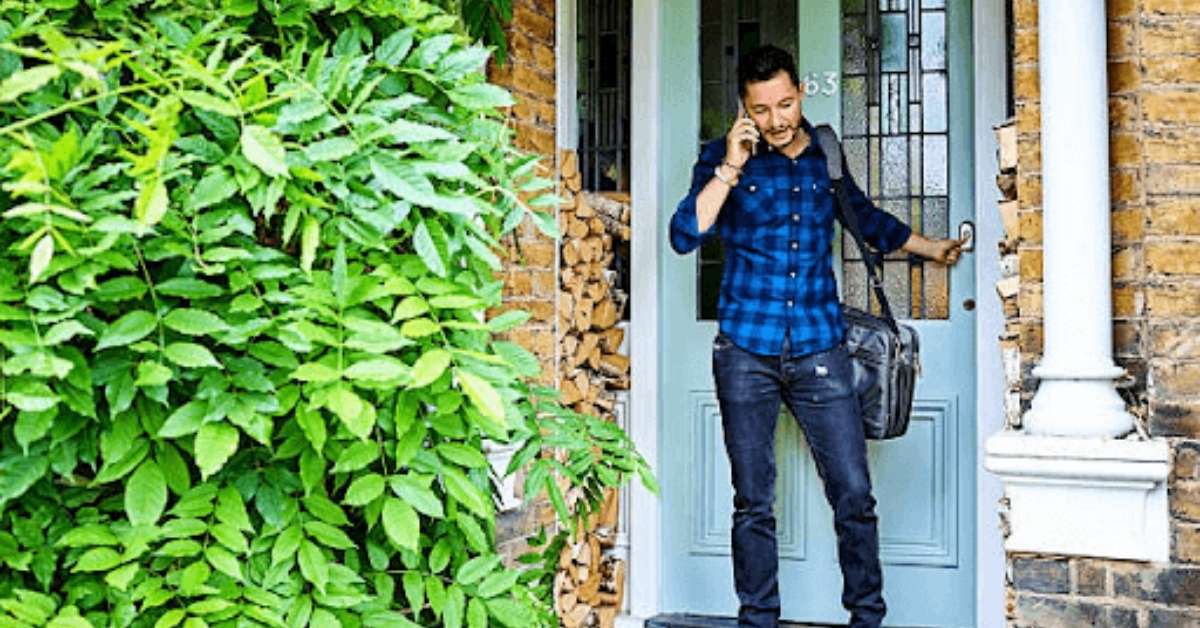
エネルギーを節約するために、特に留守中は低速で運転することができます。つけっぱなしにしておけば、たとえあなたが仕事で外出していても、微粒子やガス、ウイルスが部屋中を循環するのを防ぐことができる。
最近の空気清浄機はとにかく省エネなので、電気消費に関してはそれほどストレスはない。
また、オートモードで動作し、空気中の汚染物質の増加を検知すると自動的に高速で動作する空気清浄機もある。これは、あなたのために空気の質を監視し、空気がきれいなときに自動的に少ない電力を消費します。
#4. 窓を開けたまま空気清浄機を使ってもいいですか? - 30% 閉じた窓でより高い濾過効率
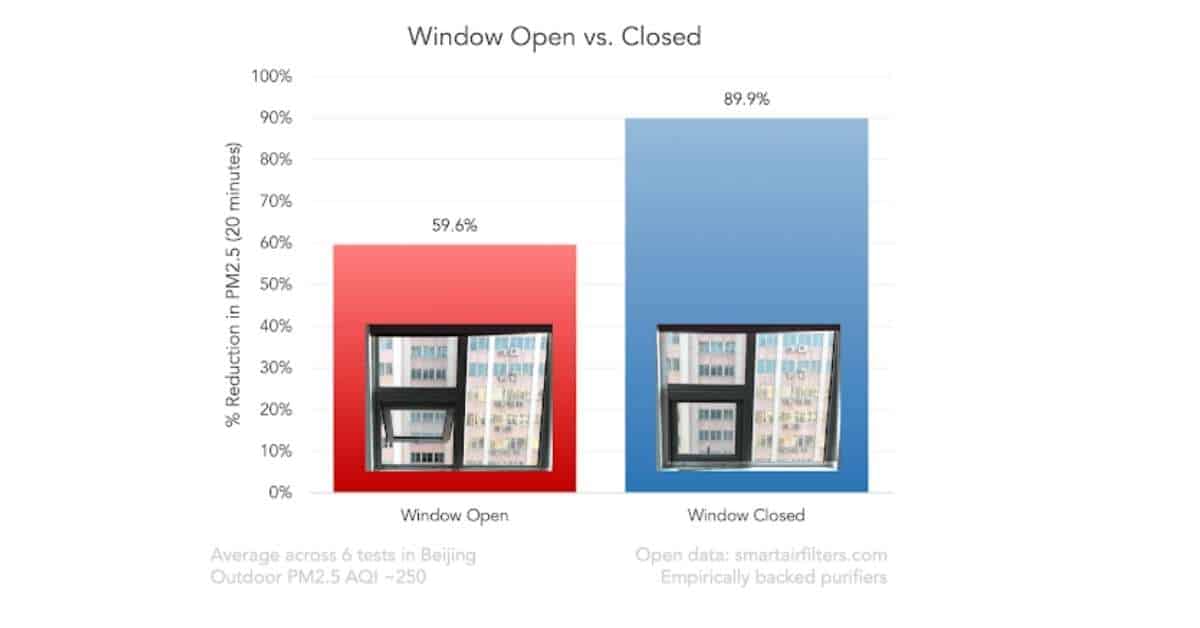
スマート・エア・フィルターが行った調査によると、汚染レベルを最大で以下のように減らすことができる。 窓を開けていても60%。 しかし、窓を閉め切った部屋では、90%の汚染物質をろ過することさえできる。これは濾過される汚染物質の数に30%の差をもたらす。 空気清浄機は、外からの力が加わらない方がより効果的なのは明らかだ。つまり、窓やドアは常に閉めておく必要がある。窓を開けると、せっかく浄化した空気が家の外に逃げてしまう可能性が高い。同時に、屋外の汚染物質を招き入れることにもなる。
ほとんどの空気清浄機メーカーは、運転中は窓を閉めておくことを勧めている。 空気清浄機は、密閉された空間に設置するのが最も効果的です。日中、窓を開けて換気することは可能です。しかし、そのような時間帯は空気清浄機を使用しないこともできます。 空気清浄機は、エアコンのようにすべての外気を清浄するようには設計されていません。従って、空気清浄機を最大限に活用するためには、窓を常に開けておかないことです。
#5. 「フィルターの交換頻度は? - 12ヶ月トップス
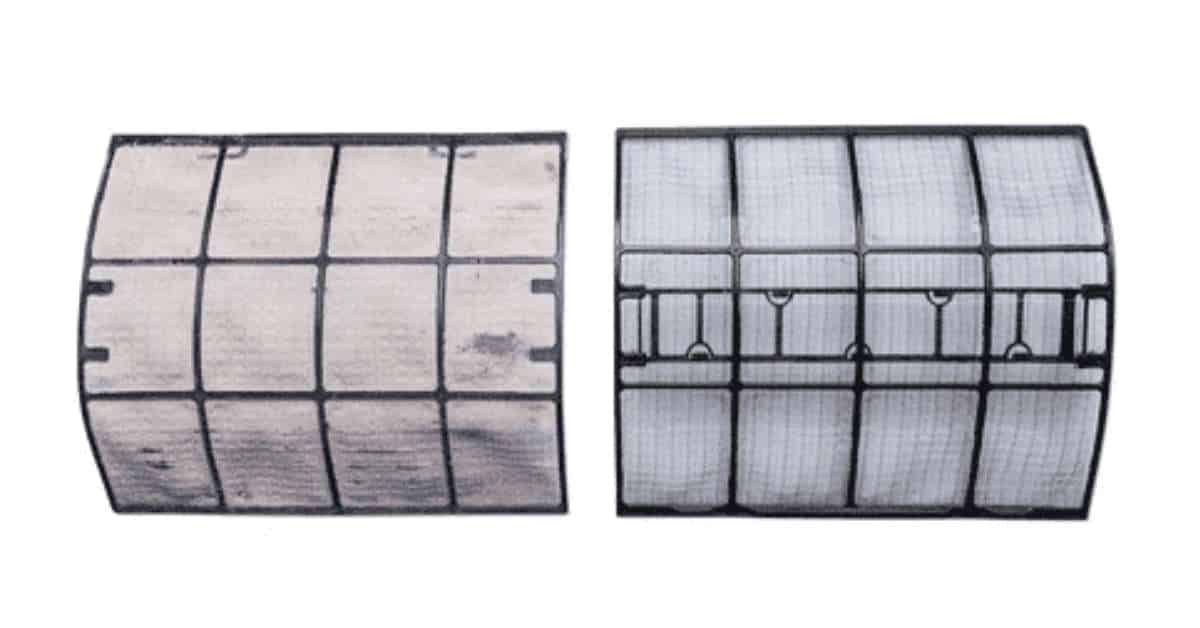
空気清浄機のフィルターを交換することも欠かせないルールだ。すべての空気清浄機には、空気中に存在する汚染物質を捕獲するフィルターが付いている。 毎日毎日、さまざまな不純物が蓄積されていく。自浄作用がないため、汚染物質を閉じ込めることができなくなる時が来る。 空気清浄機メーカーは、フィルターを3ヶ月ごとに交換することを推奨している。しかし、室内の空気汚染の程度によっては、もっと頻繁にフィルターを交換する必要があるかもしれない。 簡単な目安は以下の通り:
- HEPAフィルター: 12~18カ月交換
- 活性炭フィルター: 3~6ヵ月交換
- プレフィルター: 30日ごとに清掃し、摩耗したら交換する
- パーマネント・フィルター: 3ヶ月ごとに清掃し、破損したら交換する。
メーカーは、機械の寿命を完全に最適化し、汚染された空気を循環させないために、3カ月から12カ月ごとのフィルター交換を求めている。これは、毎年フィルターを交換するたびに多くの収入を得るための方法というわけではないが、これは実際に研究によって裏付けられている。
スマート・フィルターは、テストと外挿を通して、以下のことを発見した。 大型空気清浄機 HEPAフィルター 130平方メートルをカバーするHEPAフィルターは、一般的に22ヶ月使用できる。一方、85平方メートルの部屋で使用されるHEPAフィルターは、約13ヶ月で寿命が尽きる。
|
部屋の大きさ |
寿命 |
|
85平方メートル |
13カ月(3,120時間) |
| 130平方メートル |
22カ月(5,280時間) |
空気清浄機を最適に使用するために、フィルターのメンテナンスと交換頻度について、メーカーのガイドラインを必ずお読みください。
交換時期を怠ると、バクテリアの繁殖を招く。 ほこり 室内の空気環境を再循環させる。
#6. 空気清浄機で扇風機は使えるか? - 循環を促進する
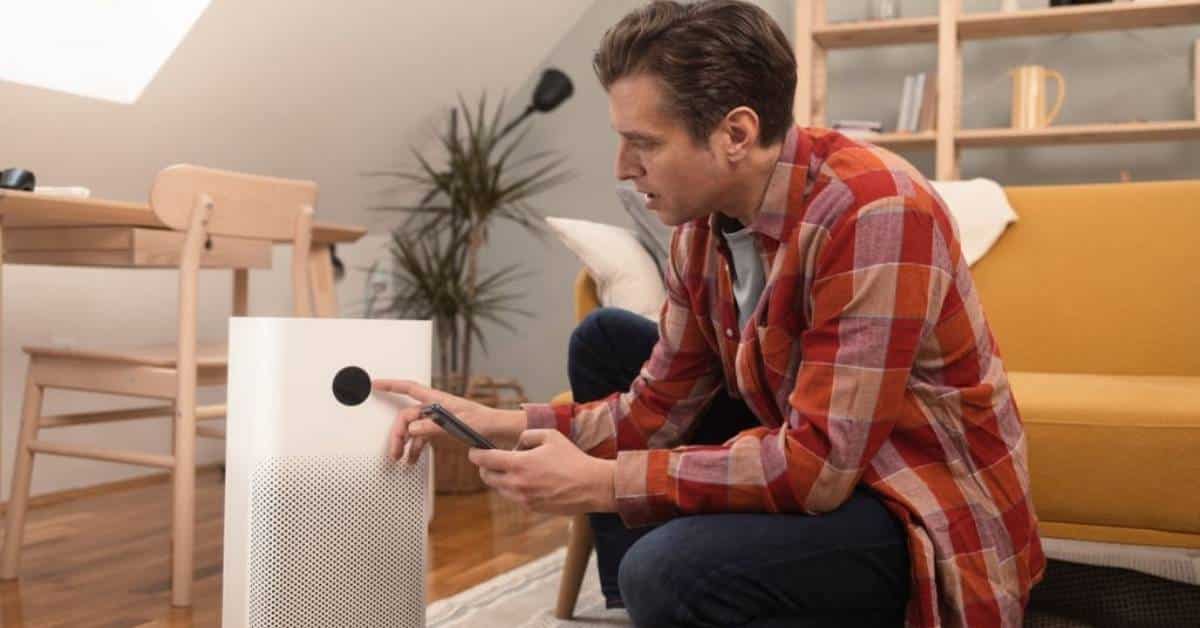
画像出典:iStockphoto
空気清浄機は部屋の隅々まで空気を届けることに最善を尽くしているが、遠くの場所まではカバーできないことがある。間仕切りのある場所や大きな家具、キャビネットの裏側などです。このような場所から空気清浄機に空気を移動させるには、追加の扇風機を使用するとよいでしょう。
もともと家に扇風機がある場合は、空気清浄機の届かない場所に移動させましょう。送風して空気を清浄機に向けて移動させ、汚れた空気が「取り残されない」ようにします。
空気清浄機を置くのに最適な場所
これは初めて空気清浄機を所有する人によく聞かれる質問である。もちろん、この問題に光を与えることは不可欠である。空気清浄機の設置場所は、その性能に影響します。置き方を間違えると、その効率は50%も低下してしまいます。
ソースの近くに置く
空気清浄機は、家の中で最も汚染されている場所に設置する必要がある。その近くにあれば、汚染物質をより早く処理することができる。例えば、地下室や浴室はカビが生えやすいので、その近くに置くとよい。
もちろん、家のどの部分に空気中の不純物が多いかを特定するのは難しい。空気清浄機に空気清浄センサーが付いていれば、もう推測ゲームをする必要はない。しかし、そうでない場合は、単に自分の感覚を使うしかない。
例えば、リビングルームにいるときにアレルギー反応に悩まされるなら、その場所に汚染物質がある可能性が高い。
高い位置で
また、空気清浄機を高い位置に置くことも検討するとよいでしょう。空気清浄機を床の上に置くだけでも、すでに効率的に仕事をすることができるので、何も問題はありません。
しかし、空気清浄機を水平方向と垂直方向の両方の空気の動きをとらえたいのであれば、高い位置に設置する必要がある。壁掛け式の空気清浄機、たとえば ヒソエア HA-W400 を使えば、より簡単だ。設置するだけで、地面や天井に浮遊する多くの汚染物質を吸収してくれる。
壁掛け式の空気清浄機を設置したくない場合は、簡単な代用品を試してみてはいかがだろう。空気清浄機 軽量空気清浄機 そして、机やテーブルなど、地面から離れた台の上に置く。
オープンスペースで
可能な限り、空気清浄機のためのスペースを確保する必要があります。結局のところ、空気清浄機は空気を吸収し、分配するように設計されている。開放的な空間であれば、空気清浄機はこれらのことを障害物なしに行うことができる。
大きな家具の近くに空気清浄機を置くと、徹底した空気清浄ができません。実際には、空気清浄機が家の中心部にあり、周囲に邪魔にならないスペースがあるのがベストでしょう。そうすることで、空気清浄機は家中に存在する空気中の汚染物質を処理することができる。
さまざまな部屋と環境に対応する推奨空気清浄機
ここでは、あなたの部屋や家、その他の生活空間で使える理想的な空気清浄機を簡単に紹介しよう。ぜひチェックしてほしい!
結論
新しく購入した空気清浄機の性能を最大限に引き出し、使用するためには、次のような注意事項を守る必要がある:
- 最適な設置場所を選ぶ
- 寝ているときでも常につけておく
- 留守中に電源を切らない
- 窓やドアを閉めておく
- フィルターの定期的な交換
- 扇風機で血行を促進する
空気清浄機といえば、ヒソエアは信頼すべき世界有数のブランドです。私たちは、医療用空気清浄機の製造に特化した空気清浄機メーカーです。 レジデンシャルそして コマーシャル アプリケーション続きを読む ヒソエア または お問い合わせ 大量注文やプライベート・ラベリング・サービスをご希望の場合。


